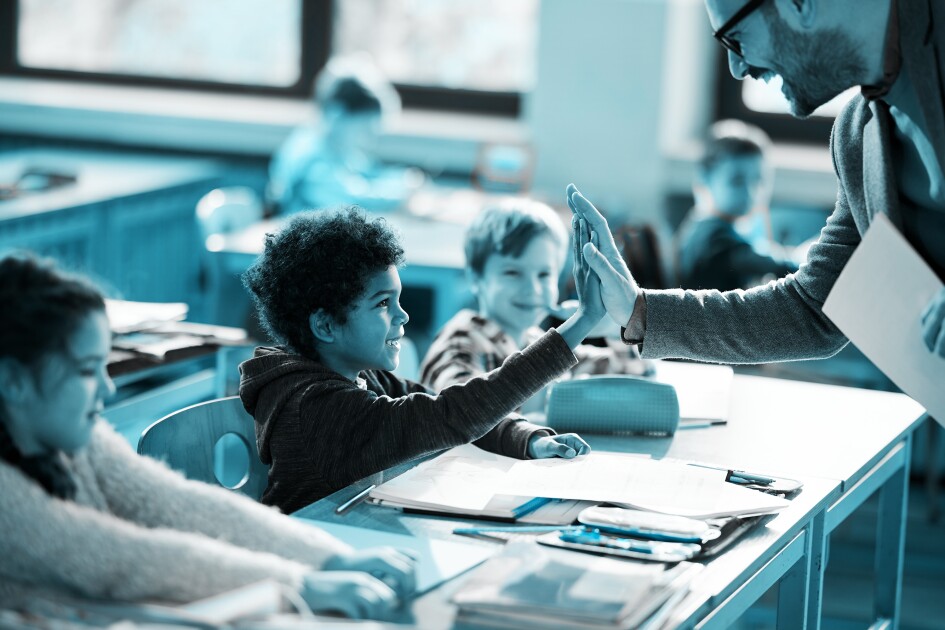
16 Jan Educators Share Advice on Supporting Students With Learning Differences
Students with learning differences may need extra support to thrive in school, engage in classroom discussions, and complete tasks.
But all students bring unique strengths and needs to the classroom—whether or not they have diagnosed challenges with executive functioning or a learning disability like dyslexia—educators said.
Education Week asked teachers on social media to share the best advice they’ve received for supporting students with learning differences.
They spotlighted flexibility, inclusivity, and clear communication as keys to success.
1. Provide flexibility and choices in the classroom
Many educators responding to our query cited the importance of flexibility, choice, or differentiation to best support students with learning differences.
Differentiated instruction—defined as “identifying students’ individual learning strengths, needs, and interests and adapting lessons to match them”—is a teaching approach that intends to help diverse groups of students learn together.
Critiques of differentiated instruction largely center around logistical concerns—including a lack of time or training for teachers to effectively implement the approach in the classroom. Check out this series of videos by veteran educators Larry Ferlazzo and Katie Hull to explore low-lift strategies to make activities “accessible for students with all types of gifts and challenges.”
In general, advocates of increased student agency in class say that it improves students’ motivation and academic performance. Here’s why these educators incorporate opportunities for student choice or differentiation to support students with learning differences.
“Recognize that each student has unique needs and abilities. Tailor your teaching methods, materials, and activities to accommodate their learning style, pace, and preferences. This personalized approach can greatly enhance their understanding, engagement, confidence and set them up for success in your classroom.”
“Choice! Give students choice on how to best showcase their learning and it’s a win for all.”
“Easy! Self-paced learning! I never differentiated any better than when I moved to a model of self-paced, blended, mastery-based instruction where I was legitimately able to work with small groups and one on one most of my time in the classroom. My students were more engaged and I was able to better support each of them along their learning journey, whether through extra support or extension activities.”
“Letting students choose things for themselves gives them the ability to do something they are comfortable with, however sometimes we have to encourage them to choose something new. Choice is the key for all learners.”
2. Ensure effective communication
Students with learning differences need to feel the confidence that they are being heard at school and the security that comes with clear expectations and feedback, educators said.
In a 2021 opinion essay on supporting students with learning differences, educator Elizabeth Stein wrote: “The best thing we can do to support students with disabilities is to hear what they have to say—and notice how they are perceiving and participating in learning experiences. We must … create experiences that embrace and embed student voice and perspective. And when in doubt of how best to support students—just ask them!”
Educators on social media agreed.
“Feedback is crucial. Build their confidence!”
“Voice and choice help students feel a sense of control.”
— Lisa M.
“Talk to them about their data.
-
Put it in terms that students can understand and form goals together.
Help students gain ownership and (eventually) pride in their progress.”
3. Cultivate inclusive environments
Educators and advocates have long championed the value of inclusive classroom environments for students with disabilities, including deliberate strategies to include all learners in play, discussions, and activities.
“Research has shown that students with disabilities tend to perform better academically when integrated into general education classrooms, and their peers also gain an understanding and develop acceptance of people who are different from them,” wrote EdWeek reporter Caitlynn Peetz in a recent story about creating inclusive classrooms for blind students.
Educators on social media echoed the importance of welcoming classrooms.

